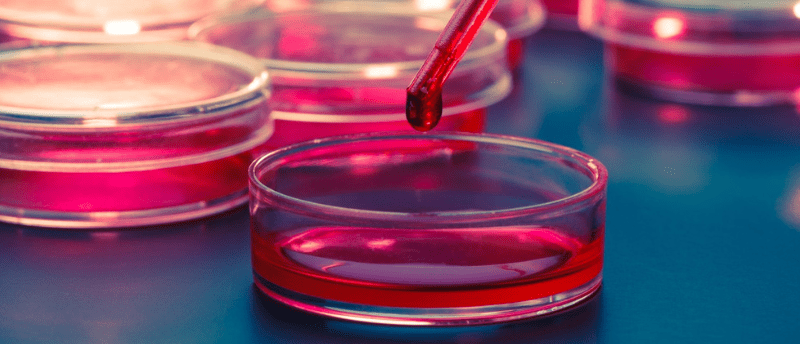Immunogenicity assessments for cell therapies: an interview with Johanna Mora

 Johanna R. Mora, PhD
Johanna R. Mora, PhD
Senior Director
Bristol-Myers Squibb (NY, USA)
Dr Mora is currently a Senior Director in Clinical Pharmacology, Pharmacometrics, Disposition and Bioanalysis at Bristol-Myers Squibb (BMS). She received a Bachelor of Science degree in Chemistry from the University of Costa Rica (San Pedro, Costa Rica) in 1999 and a PhD in Analytical Chemistry from the University of Kansas (KS, USA) in 2004. At BMS she has oversight of the PK and immunogenicity strategy for programs across all therapeutic areas. Johanna is a mentor to her team, an author of over 20 scientific publications and has served in several cross-functional teams within BMS. She is an active member of the American Association of Pharmaceutical Scientists and has served in the Emerging Technology Focus group and the Therapeutic Product Immunogenicity Community. Johanna has also held active roles within the Applied Pharmaceutical Analysis Regulated Bioanalysis Committee.
Please could you provide some background on cellular immunogenicity assessments in cell therapy programs?
First, it’s important to understand that there are two components of the immune response: innate and adaptive. Innate immunity is the first line of defense against microbial pathogens, mediated primarily by macrophages and natural killer cells, and may prime the adaptive immune response if the relevant antigen-presenting cells are involved. For biotherapeutics such as monoclonal antibodies, we are used to monitoring for the presence of anti-drug antibodies, which is the adaptive (and humoral) component of the immune response.
Novel therapeutics like cell therapies may contain residuals such as lentiviral components, culture medium and clumped cells associated with the manufacturing process. These components can interact with innate phase receptors, e.g., pattern recognition receptors and Toll-like receptors, sense viral components, as well as genes, and induce an inflammatory response through the release of cytokines. Another component of innate phase immune response is mediated by complement; for some viral vector-based gene delivery therapies, viral capsids can activate complement proteins by directly binding to them or by opsonization of viral capsids complexed with pre-existing antibodies. The risk of complement activation with CAR-T therapies is usually quite low as the residual levels of viruses used in manufacturing may be very low.
For cell-based therapies, we also need to consider the cellular arm of the adaptive phase immune response. The residuals, as well as the engineered CAR domain, may have epitopes that, when expressed intracellularly, can be presented in the context of Class I major histocompatibility complex and lead to a cytotoxic T lymphocyte response. In addition, a CAR-T cell could be ingested by professional antigen-presenting cells and activate T effector response via presentation in the context of Class II major histocompatibility complex, which can further drive a humoral response.
Is characterization of cellular immunogenicity critical for testing cell therapies and which techniques are currently being utilized?
In my opinion, characterization of cellular immunogenicity may not be critical for testing cell therapies and should be assessed on a case-by-case basis. Although there are reports of cellular responses impacting expansion and/or persistence of a cell therapy, these observations did not change the interpretation of clinical results from a trial. Only one out of six approved CAR-Ts report cellular immunogenicity in the label and a recent literature review on immunogenicity of CAR-Ts across 16 studies reports on cellular incidence ranging between 0 and 90%. Some of these studies reported unknown clinical significance of the cellular response, while others reported clear impact on persistence. Given the available information across autologous CAR-Ts, at the 2023 WRIB meeting we agreed that a viable approach is to collect samples for cellular immunogenicity assessments, bank them and only analyze them if there is a change in PK/PD/safety that is suspected to be immunogenicity driven with an absence of a humoral (antibody) response. In addition, teams may want to leverage peripheral blood mononuclear cell (PBMC) collections for other exploratory assessments to reduce the burden on patients, as long as they can ensure enough volume is collected.
Why is ELISpot such a widely implemented platform for assessment of cellular immune responses and what are some of the challenges associated with ELISpot assays?
ELISpots are widely implemented, but there are other platforms that may be used for the assessment of cellular immune responses. Intracellular cytokine staining combined with flow cytometry is one of those. Both methods require the isolation of PBMCs from a whole blood collection, which is one of the critical aspects that impact the quality of the results. Below are some important points about ELISpots that facilitate wide implementation:
- ELISpots have been considered more sensitive and can detect the low precursor frequency antigen-specific T cells compared to flow.
- As ELISpots can be conducted from frozen cells, they can be shipped and batch analyzed in a specialized lab. This is different to flow where fresh blood-derived cells are required, which may not be feasible for bigger clinical trials with multiple sites and not all labs may have the capability and instrumentation to conduct flow.
- Sample handling, shipping and analysis for ELISpots has been standardized through consortiums like the Cancer Immunotherapy Consortium and Vaccine Immune Monitoring Consortium.
There are now several publications that provide information about best practices for ELISpots and there is agreement across these reports on how critical the isolation of PBMCs and preservation of their integrity is to the success of the assessment. The remaining challenges include:
- PBMC isolation requires high blood volume (~7mL) to get enough PBMCs for the assay.
- There are no established guidelines for validation parameters.
- Sample transport logistics can be an issue.
- ELISpot cannot be multiplexed beyond two to three cytokines/chemokines.
How have the recommendations for ELISpot assays progressed in recent years and how have the discussions at WRIB 2023 helped to advance the field?
ELISpots were not among the routine assays run within the bioanalytical laboratory for PK and immunogenicity assessments. So, we had to reach out to subject matter experts who had been applying them, mostly in the field of vaccines and immune monitoring as part of cancer therapies and start to share best practices for their implementation. Although these practices have been shared, there may still be considerable differences across laboratories for performing the validation and/or qualification of these assays. The current discussions are around alternate platforms, including sample preparation/collection that may ensure higher data quality. As we develop a larger body of knowledge and continue to share data, our scientific community should be able to harmonize practices, improve data quality and develop a clear risk approach for when that data is needed.
References:
- Corsaro B, Yang TY, Murphy R et al. 2020 White Paper on Recent Issues in Bioanalysis: Vaccine Assay Validation, qPCR Assay Validation, QC for CAR-T Flow Cytometry, NAb Assay Harmonization and ELISpot Validation ( Part 3 – Recommendations on Immunogenicity Assay Strategies, NAb Assays, Biosimilars and FDA/EMA Immunogenicity Guidance/Guideline, Gene & Cell Therapy and Vaccine Assays) Bioanalysis 13(6), 415–463 (2021).
- Janetzki S, Panageas KS, Ben-Porat L et al. Results and harmonization guidelines from two large-scale international ELISpot proficiency panels conducted by the Cancer Vaccine Consortium (CVC/SVI). Cancer Immunol. Immunother. 57(3), 303–315 (2008).
- Piccoli S, Mehta D, Vitaliti A et al. 2019 White Paper on Recent Issues in Bioanalysis: FDA immunogenicity guidance, gene therapy, critical reagents, biomarkers and flow cytometry validation (part 3 – recommendations on 2019 FDA immunogenicity guidance, gene therapy bioanalytical challenges, strategies for critical reagent management, biomarker assay validation, flow cytometry validation & CLSI H62). Bioanalysis 11(24), 2207–2244 (2019).
- Smith SG, Smits K, Joosten SA et. al. Intracellular cytokine staining and flow cytometry: considerations for application in clinical trials of novel tuberculosis vaccines. PLOS one 10(9) doi:10.1371/journal.pone.0138042 (2015).
- Wagner DL, Fritsche E, Pulsipher MA et al. Immunogenicity of CAR T cells in cancer therapy. Nat. Rev. Clin. Oncol. 18(6), 379–393 (2021).
